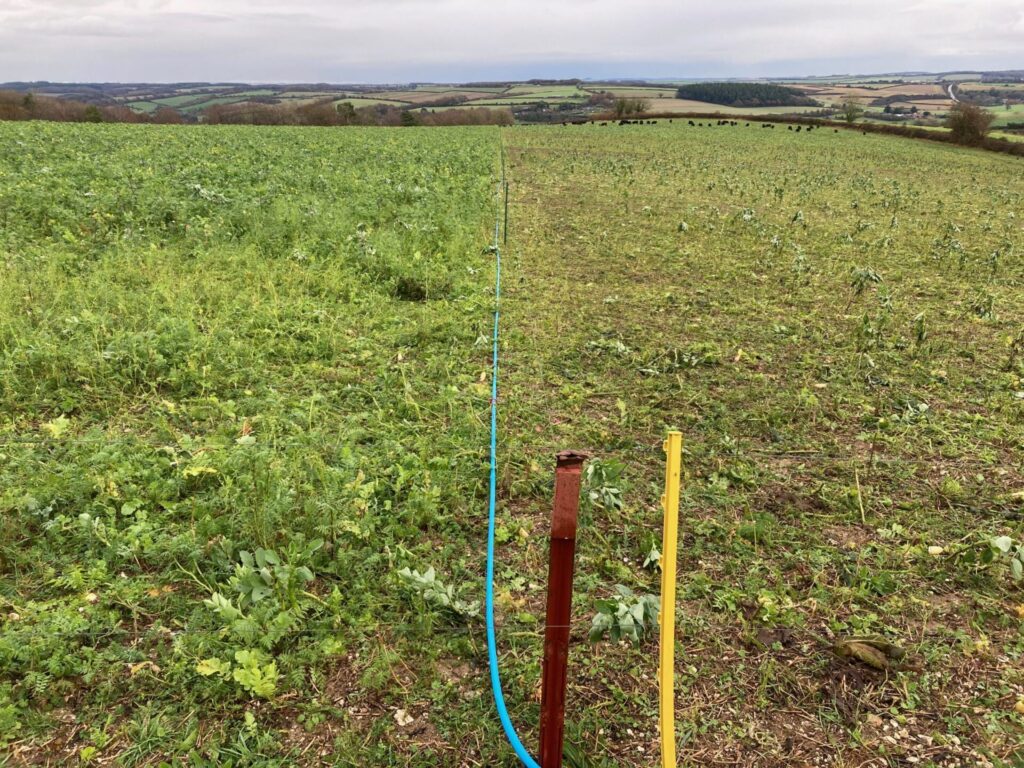From kitchen classrooms to hedge health: farmer George Hosford dives into hedge surveying for new farming incentives, and the latest school visit

At the end of last year, a few members of our farm cluster group met at Hammoon to learn how to survey hedges. Led by hedge expert John Calder from Dorset Climate Action Network’s Great Big Dorset Hedge Project, we explored a few kilometres of hedges around Adam’s farm. They were in pretty good condition, mostly made up of a healthy mixture of species. There were plenty of trees and we even found hops, which are rare in Dorset. The prime purpose of our visit was to learn what we needed to do in order to take advantage of the hedgerow offer, part of the new Sustainable Farming Incentive standards (SFI). For this, we don’t even have to record the species, but as John pointed out, it can be informative. An old rule of thumb is that the number of tree and shrub species in a 100ft (30 metre) length of hedge can indicate its age, with one species for every 100 years. A single-species hedge is likely to be less than 100 years old while a 1,000 year old hedge is likely to contain ten to 12 species.
However, this formula must be used with caution.

For example, it’s anyone’s guess how this is supposed to work if we are surveying our own new hedges, planted last winter, where we were planting up to 10 species within 30m.
For the purposes of SFI, we simply have to assess each stretch of hedge around a field according to the Adams formula, which will help us to decide the most suitable management for the hedge in the future, whether trimming, laying, coppicing, gapping up etc.
There are bonuses available if you have a tree per 100m of hedge. These can be existing, newly planted, or a suitable hedge plant selected and marked to not be trimmed and allowed to grow up.
John and his team have been helping many farmers across Dorset to learn about this, and to get their hedges into SFI. John has put huge amounts of energy into the development of the SFI hedgerow standards, with numerous messages and presentations to DEFRA, RPA etc, and one enduring sadness is the absence of any incentive in SFI to actually plant new hedge. We very much hope this will materialise in the next chapter of releases. For more information see the Great Big Dorset Hedge project here.

Banished empties
The cows are indoors for winter; the plumper ones are munching on hay made from our wild flower margins, the thinner ones are on the lovely, soft, sweet meadow hay – much more digestible with less roughage. Pregnancy diagnosis detected six empty out of 70, which is a bit higher than it should be. The three empties we have kept have been banished to the steep banks of the valley – no nice warm shed for them!
The young stock are in two groups grazing cover crops. There’s lots of leaf to eat and a good many roots this year – thanks to the damp autumn, daikon radish and turnips abound. They get a fresh hectare every day, so they don’t over-tread the ground, and leave plenty of green matter in place to grow on in the milder periods.

A new kitchen classroom
December saw the inaugural session in our new kitchen classroom. A group of willing participants from Durweston school arrived ready to try out the programme that our friendly teacher Penny had worked out. The plan was for the children, with careful guidance, to prepare and cook a simple vegetable soup, including fresh farm-squeezed rapeseed oil, field-grown potatoes and onions from the garden. They would also be shaping and baking rolls made with 50 per cent homegrown wheat flour, having first seen the wheat being ground into flour. And then, if successful, taste the result. Penny brought along dough she had prepared the day before, using some of our wildfarmed wheat flour, which the children made into a variety of shapes. The bread was very tasty, and considerably more popular than the soup (although I hasten to add that it too was very tasty)! In between the cookery, the children painted farm themed pictures and did a cutting and sticking exercise to help them realise which foods originate locally and which come from overseas.
Pictured above is Daisy the sheep on the same school visit. She excelled herself on the last school farm visit of the year – she has such patience and gentle endurance. Everyone wants to stroke her, and she stays on long after all the toast has been eaten. Hands-on experience is an important element of school visits, even in mid-winter. Some of the ewes are wonderful with the children (much more tolerant than with adults!).
On the left is Reggie, who was at work over Christmas. All the ewes had a red rump – we changed his raddle crayon, and none turned blue. Let’s keep it that way and have a nice compact lambing period in May.

